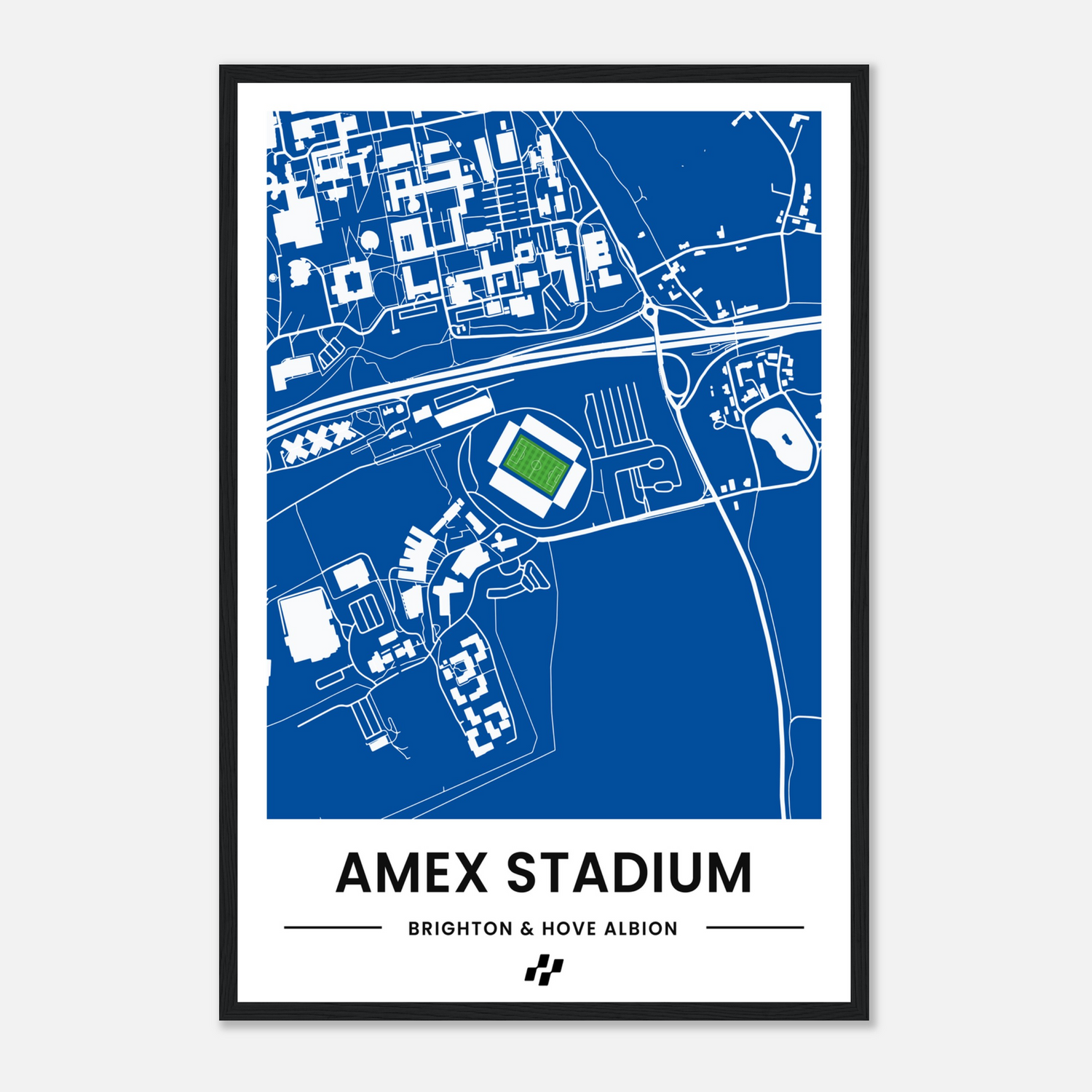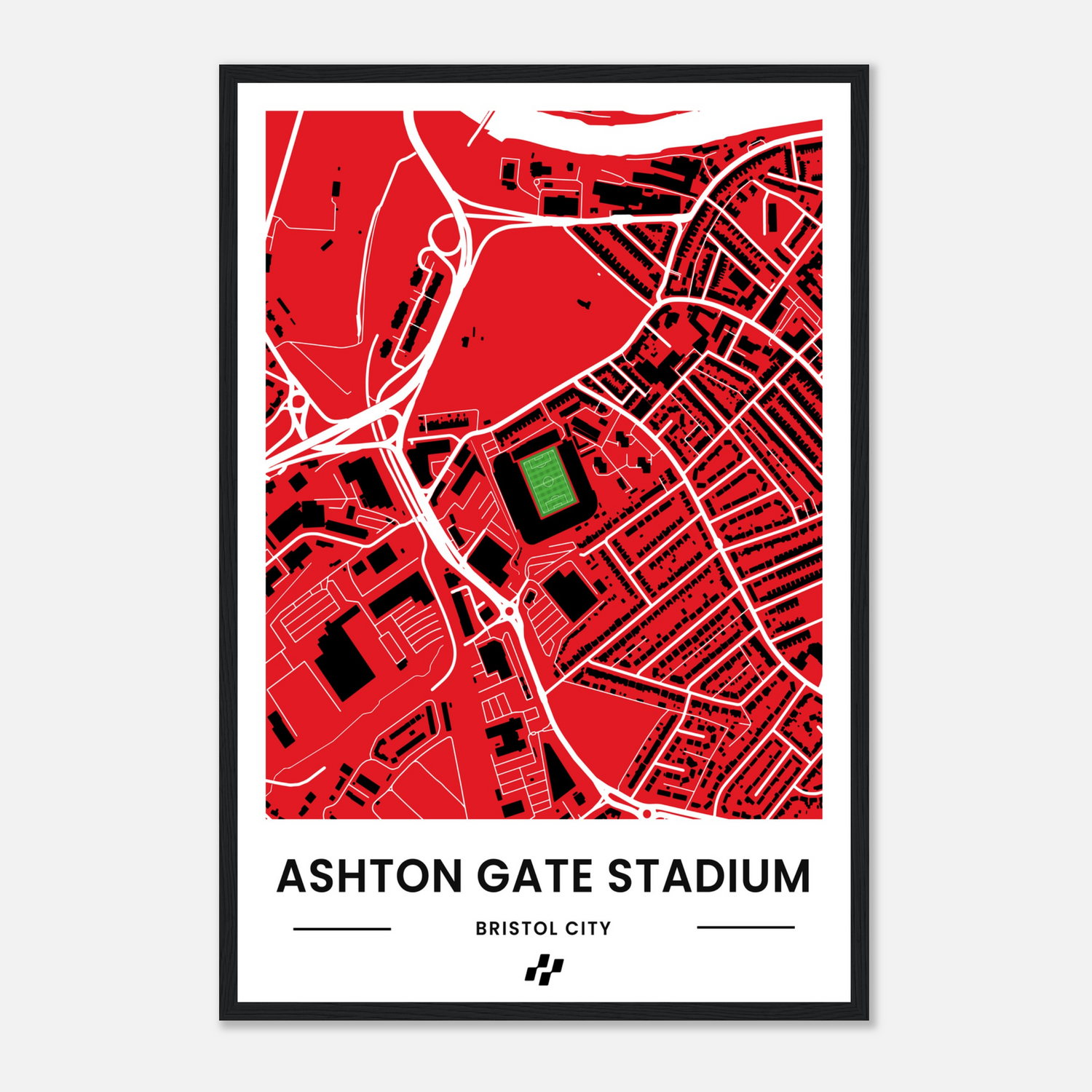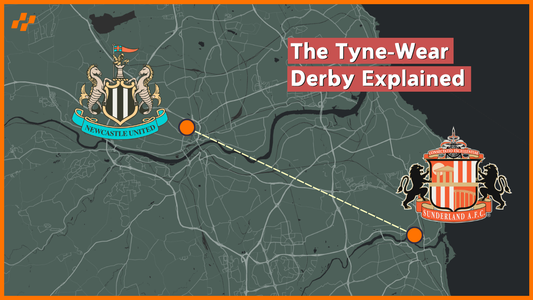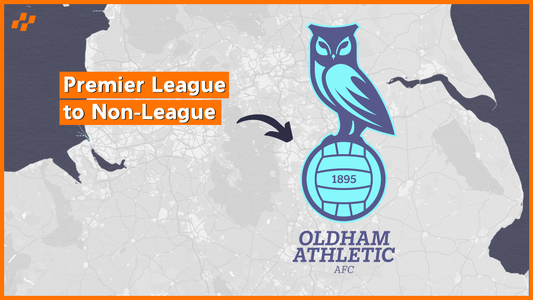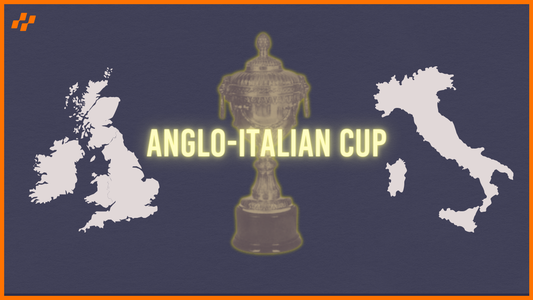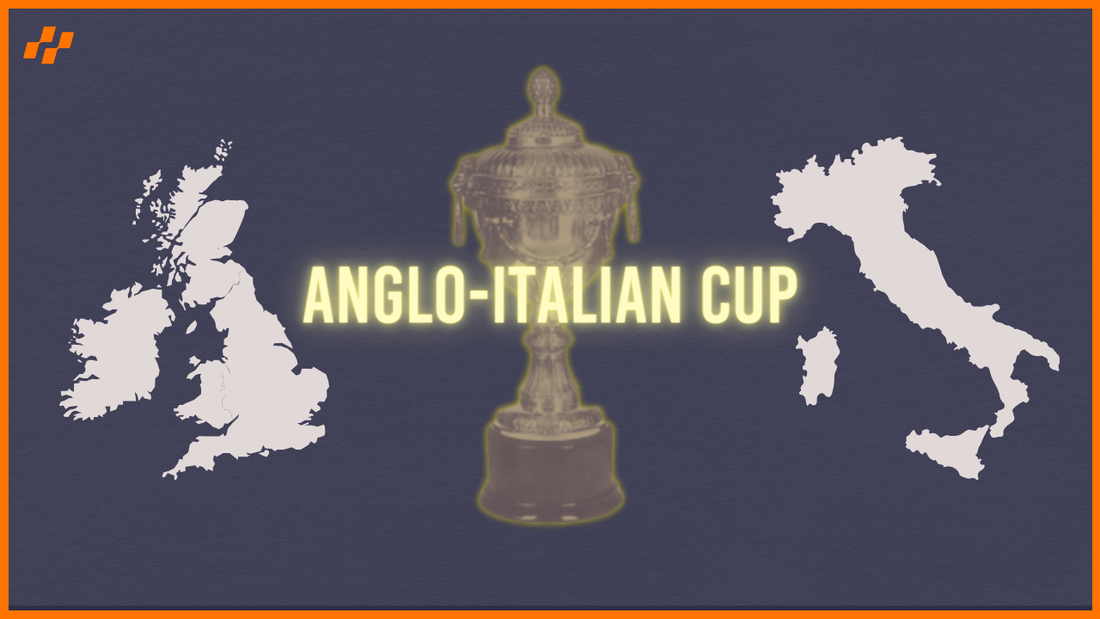
The Forgotten Anglo-Italian Football Tournament
Share
Imagine a football tournament where Swindon Town beat Juventus, fans riot after being thrashed at home, and even physios are getting stuck in mid-game punch-ups. No, this wasn’t made up, this was a real competition.
It was called the Anglo-Italian Cup, and for a brief, chaotic moment in football history, it was where English grit met Italian flair... and things got very weird.
So how did English lower-league sides end up trading blows with Serie A stars? The Anglo-Italian Cup was football's strangest experiment, and its spectacular failure makes for one hell of a story.
Watch the video on our YouTube channel
BORN OUT OF BUREAUCRACY
It starts, oddly enough, with bureaucracy. Back in 1967, Queens Park Rangers won the League Cup while playing in the third division. They were rewarded with a place in the Inter-Cities Fairs Cup, European football's precursor to the UEFA Cup.
But here's the thing - UEFA said "thanks, but no thanks" because they'd banned third-tier teams from European competitions. I guess they weren’t seen as being able to compete at the highest level.
Two years later, Swindon Town found themselves in the exact same situation. League Cup winners, European hopes dashed.
But this time, someone had a brilliant idea. Why not organise a special match between the English League Cup winners and the Italian Coppa Italia winners? An Anglo-Italian showdown.
This was to compensate Swindon for UEFA's refusal to allow them to enter the Inter-Cities Fairs Cup, which was prompted by the FA. Swindon didn't just show up; they won 5-2 on aggregate against Roma. That result sent shockwaves throughout football.
Enter Gigi Peronace, who is an important figure in the world of Italian football despite never playing the game professionally. He became one of the first modern-day agents on the continent, negotiating player transfers and manager contracts for some of Britain and Italy’s top stars.
This larger-than-life character saw the potential for something special. He convinced the football authorities to create a new tournament, and so, the Anglo-Italian Cup was born with the inaugural tournament in 1970. Perfectly timed to fill the summer fixture gap and give clubs both action and much-needed income during the off-season.
RULES? WHAT RULES?
From day one, this was no ordinary tournament. The inaugural edition featured six English teams and six Italian teams split into three mixed-nationality groups.
Each team played against the two teams in their group from the opposing nation. Matches were played home and away with the first legs played in England and the second legs played in Italy.
Two points were awarded for a win, one point for a draw, and In a bid to encourage attacking football, the organizers introduced unusual scoring rule. A point for each goal scored, teams had the potential to lose a match and still top the table if they banged in enough goals.
The team with the highest number points from each nation then contested the final.
The offside rule was changed too. Players could only be offside inside the penalty area. That's right - for most of the pitch, offside simply didn't exist.
Teams could also name five substitutes and use two of them, revolutionary stuff for 1970. They even trialed squad numbers, decades before they became standard. The organizers were basically running a live beta test of football's future, and it was magnificent chaos.
ENGLISH UNDERDOGS, ITALIAN GIANTS
While Italy sent some Serie A heavyweights, Juventus, Roma, Inter. England’s representatives were often unfancied sides from outside the top tier.
For the English clubs, this was a golden ticket. A chance to play in a European tournament. And they grabbed it with both hands.
Sheffield Wednesday beat Napoli 4-3. Swindon Town defeated Juventus 1-0. Crystal Palace knocked out Inter Milan 2-1. Blackpool thrashed Sampdoria 4-1. These weren't flukes - they were systematic giant-killings on an industrial scale
But with the thrills came plenty of spills. The Anglo-Italian Cup quickly gained a reputation for rough play and frayed tempers. In the inaugural 1970 tournament, Swindon Town made it through to the final to face Napoli, by wining their group, despite earning the same amount of points with wins and draws, Swindon had scored one more goal than Middlesbrough earning them one more point.
The final took place at the Stadio San Paolo stadium. By the 63rd minute, Swindon were 3-0 up and cruising towards a great upset.
That's when things went completely off the rails. Neapolitan fans, understandably livid at watching their team get schooled by a third-tier English side, began hurling bottles and ripping seats from the ground and hurling them onto the pitch. What started as isolated incidents quickly escalated into full-scale rioting.
The referee abandoned the match with 11 minutes left, Swindon were declared winners by default, and over 100 people were injured in the chaos about 30 arrested. Napoli were reportedly banned from European competition for two years as punishment.
The violence was not an isolated incident. Between 1970–73, a number of Anglo-Italian fixtures degenerated into fights on the pitch or battles in the terraces. In 1973, Hully City defeated Lazio 2–1, the match descended into what one reporter described as nearly becoming "a wholesale punch-up."
Players traded blows, a Lazio physio fought with a Hull steward, and Italian police had to restore order.
Yet amid the chaos, there were genuine moments of magic. Swindon Town’s 1970 triumph remains a cherished honour for the club. Blackpool's John Burridge called winning the 1971 final "one of the greatest moments" of his career.
These weren't just matches - they were life-changing experiences for players who never expected to taste international glory.
THE SEMI-PRO YEARS
Unfortunately, the tournament's novelty was wearing off, and clubs and supporters grew weary of the extra games.
What had begun as a summer sideshow became a burden alongside regular league and cup duties. After Newcastle’s 1973 victory, the tournament was quietly shelved due to dwindling interest and mounting logistical problems.
In 1976, the tournament made a comeback as the Anglo-Italian Semiprofessional Cup. The bigger names were gone, replaced by Italian Serie C sides and English non-league teams. It was football's equivalent of a straight-to-DVD sequel, but it maintained that eccentric spirit.
The competition’s format and name seemed to change almost yearly in this period. In 1976, Wimbledon (a rising non-league team at the time) reached the final against Monza, only to lose 1–0 to the Italians.
Bath City made back-to-back finals in 1977 and 1978. And in 1979, little-known Sutton United became the only English club to win during the semi-pro years, defeating AC Chieti 2-1.
But Italian dominance was growing. From 1982 onward, no English side would reach another final. The tournament became increasingly Italian-centric, and by 1986, public interest had evaporated. The Anglo-Italian Cup went back into hibernation, this time seemingly for good.
THE FINAL REVIVAL
Football, however, loves a comeback story. In 1992, circumstances aligned for one last hurrah. English clubs were rebuilding their European reputation after the Heysel disaster, the Premier league was born and both countries needed a replacement for their defunct domestic cups.
Enter the Anglo-Italian Cup, mark three. This time it featured second-tier clubs - England's First Division and Italy's Serie B. The matches had professional edge, the format was streamlined, and the final was held at Wembley Stadium.
Over four seasons, we witnessed some brilliant football and familiar chaos. Cremonese beat Derby County 3-1 in 1993, with a young Enrico Chiesa in their squad. Brescia defeated Notts County in 1994. Notts County got their revenge in 1995, becoming the only English winners of the revival era.
The 1996 final was a fitting send-off - Genoa thrashed Port Vale 5-2 at Wembley, with goals from a young Vincenzo Montella. It was high-scoring game that perfectly captured the tournament's spirit.
But even in its modern incarnation, the Cup couldn't escape controversy. In 1995, Birmingham City's match against Ancona descended into a mass brawl that would have made the 1970s proud.
Ancona's manager grabbed a Birmingham player by the throat, players traded punches across the pitch, and the referee suffered a broken finger trying to restore order.
The aftermath was brutal. Multiple Birmingham players and staff were charged by Italian authorities, and rumor has it they still risk arrest if they set foot in Italy. It was a scandal that proved the Anglo-Italian Cup remained as mad as ever.
THE LEGACY
By 1996, fixture congestion and administrative disagreements killed the tournament for good. The Anglo-Italian Cup was finally, definitively dead.
This wasn't football's most prestigious tournament, but it might have been its most entertaining. Where else could you see Swindon Town beat Juventus, or watch a team physio trade blows with opposition players? The Cup was a product of a different era, when administrators cheerfully invented new competitions hoping to draw crowds and make a few quid.
Many of these experiments were, as one writer put it, "half-baked trophies supporters had very little interest in." The Anglo-Italian Cup was different because it embraced the chaos. It gave us unforgettable matches, goals, and stories that sound too crazy to be true.
Next read: What Happened At The First Ever UEFA European Championship

